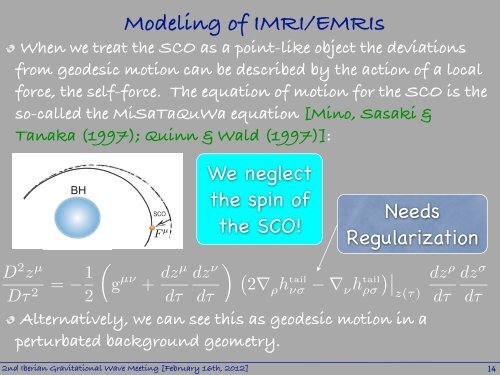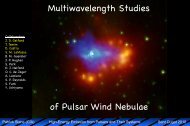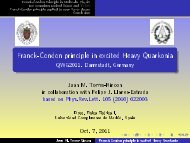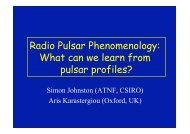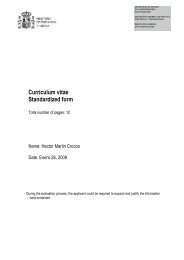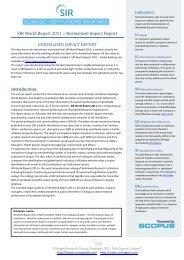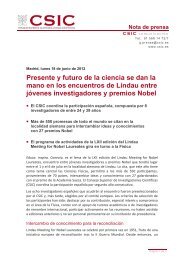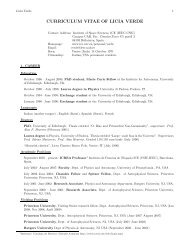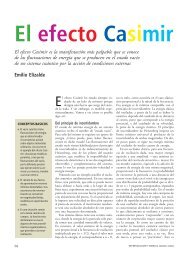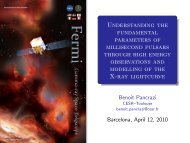On the modeling of Intermediate- and Extreme-Mass-Ratio Inspirals
On the modeling of Intermediate- and Extreme-Mass-Ratio Inspirals
On the modeling of Intermediate- and Extreme-Mass-Ratio Inspirals
Create successful ePaper yourself
Turn your PDF publications into a flip-book with our unique Google optimized e-Paper software.
Modeling <strong>of</strong> IMRI/EMRIs<br />
When we treat <strong>the</strong> SCO as a point-like object <strong>the</strong> deviations<br />
from geodesic motion can be described by <strong>the</strong> action <strong>of</strong> a local<br />
force, <strong>the</strong> self-force. The equation <strong>of</strong> motion for <strong>the</strong> SCO is <strong>the</strong><br />
so-called <strong>the</strong> MiSaTaQuWa equation [Mino, Sasaki &<br />
Tanaka (1997); Quinn & Wald (1997)]:<br />
We neglect<br />
BH<br />
<strong>the</strong> spin <strong>of</strong><br />
SCO<br />
Needs<br />
F µ<br />
<strong>the</strong> SCO!<br />
Regularization<br />
D 2 z µ<br />
Dτ 2 = −1 2<br />
g µν + dzµ<br />
dτ<br />
dz ν<br />
dτ<br />
2∇ρ dz ρ<br />
h tail<br />
νσ −∇ ν h tail z(τ)<br />
ρσ<br />
dτ<br />
dz σ<br />
dτ<br />
Alternatively, we can see this as geodesic motion in a<br />
perturbated background geometry.<br />
2nd Iberian Gravitational Wave Meeting [February 16th, 2012] 14


